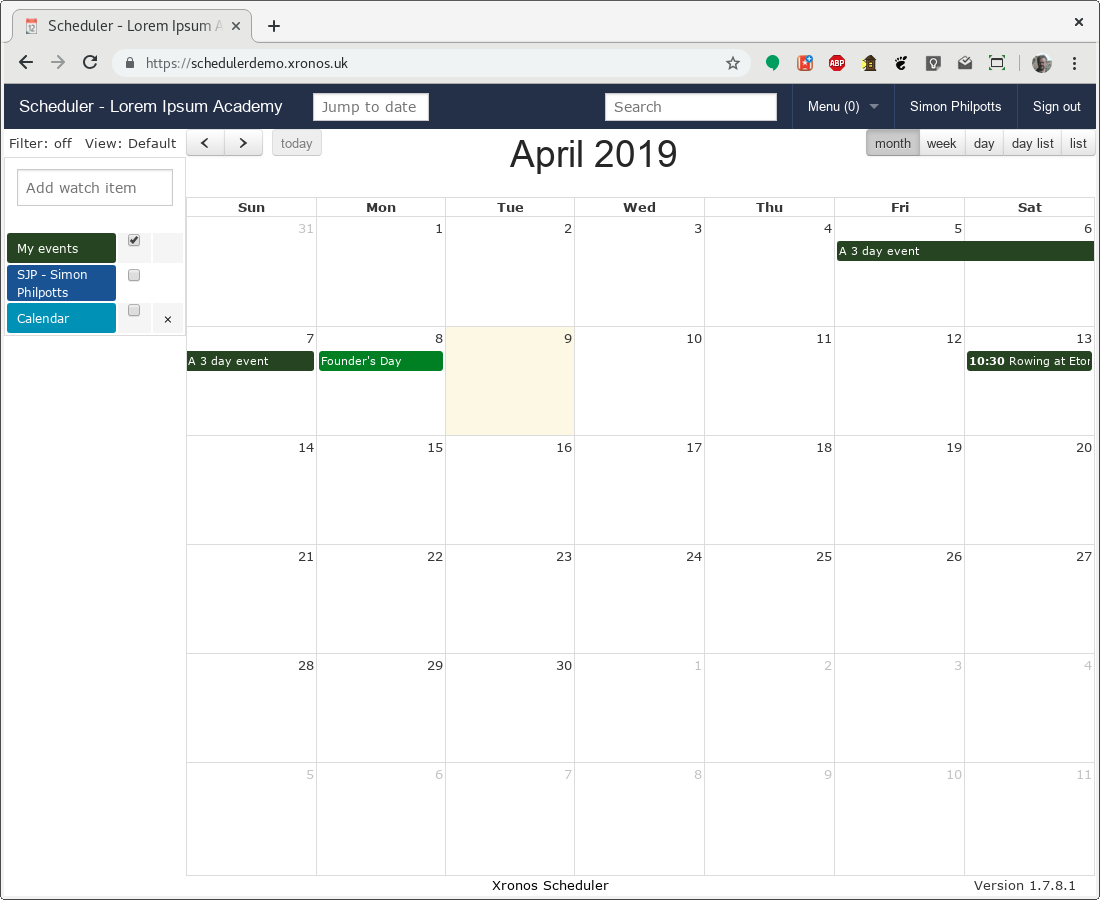Dates and date handling
The handling of dates in any kind of computer program is prone to causing far more confusion than one might expect. They’re simple aren’t they? No.
Most programming languages include facilities for the handling of dates and times, probably including the correct handling of time zones and daylight saving time. The computer is very precise and consistent in the way it handles them.
If you give the computer a date like “2019-03-01” it will almost
certainly store it as a date and time - 2019-03-01 00:00:00. That is,
midnight at the start of the 1st of March 2019. It will do this
with any date which you give it.
People on the other hand are not so consistent. The main stumbling point is how we refer to the duration of an event which lasts a whole number of days.
Events with times are easy - we might say that an event starts at 2pm
and ends at 4pm. We don’t really need to worry about whether the
exact instants of 2pm and 4pm are included - they’re too short to worry
about. The computer would store the start time as 2019-03-01 14:00:00
and the end time as 2019-03-01 16:00:00. Any calculations which you
might care to do with these two date/times - e.g. calculating the duration
by subtracting one from the other - will work exactly as you would
expect.
However, when an event lasts a whole number of days then it’s not quite so simple. We might say, “The public holiday is on the 3rd”, or “I am away from the 5th to the 7th”. There are two implicit pieces of information here which a human would naturally understand, but a computer won’t unless we do things right. In the first case, the implicit piece of information is that the event lasts all day - it ends at the end of the 3rd. In the second case, what is meant is that the event runs from the start of the 5th to the end of the 7th.
The start time for our public holiday is 2019-03-03 00:00:00
but the end time is 2019-03-04 00:00:00. This can really surprise
people. You can if you prefer think of the latter time as
2019-03-03 24:00:00 but you’ll almost certainly find that your
programming language libraries convert it immediately back into
2019-03-04 00:00:00.
In the second case, my absence is from 2019-03-05 00:00:00 to
2019-03-08 00:00:00.
It is absolutely vital that the date/times are stored internally to a program in this way, because otherwise no calculations on them will work. The calculation of durations will come out wrong; the calculation of overlaps will come out wrong. Nothing will work quite right.
However, it is completely unreasonable to expect end users to change their habits and ways of expressing themselves to accommodate the computer. That’s not the way round in which it should work - the computer should do the work to accommodate the human.
Happily, once the problem has been clearly laid out, the solution is easy.
If the user enters a single date for an event, take it as meaning the whole of that day and set the end time accordingly.
If the user enters a start date and an end date, store the start date as given, but add 1 day to the end date and store that.
When displaying durations back to the user in textual form, reverse these two bits of data massaging.

Note that this work is only needed if we’re handling textual dates, whether typed in or picked from some kind of date selector. When a user is using a graphical interface to set or view the duration of an event, the confusion doesn’t arise. If an event runs from the 5th to the 7th, the user expects to see the bar run from the start of the 5th to the start of the 8th. If it ran just to the start of the 7th, he or she would be surprised and confused. There’s only a problem when we’re describing the duration using words.
See the sample to the right for a graphical version of this event.
Why is this relevant to Scheduler? Because all this work has been done for you already. Scheduler stores the start and end date/times for events in the way described above, and contains code to handle the subtle nuances of human language in the way which people expect. The API builds on this when allowing you to create events.
The three fields which you use to specify the timing of an event are:
start_time_text
end_time_text
all_day_field
So if you were to send an event creation request with:
{
"event": {
"start_time_text": "2019-03-03",
"all_day_field": true
}
}
The system will realise that the end time should be set to 1 day later and fill it in for you automatically.
Similarly, if you were to send:
{
"event": {
"start_time_text": "2019-03-05",
"end_time_text": "2019-03-07",
"all_day_field": true
}
}
It will realise that you want your event to start at the beginning of the 5th and end at the end of the 7th.
Note
The above text refers several times to “1 day later”. It’s tempting to think of this as being the same as “24 hours later”, but it’s not. Some days have 23 or 25 hours. All this is taken care of for you.